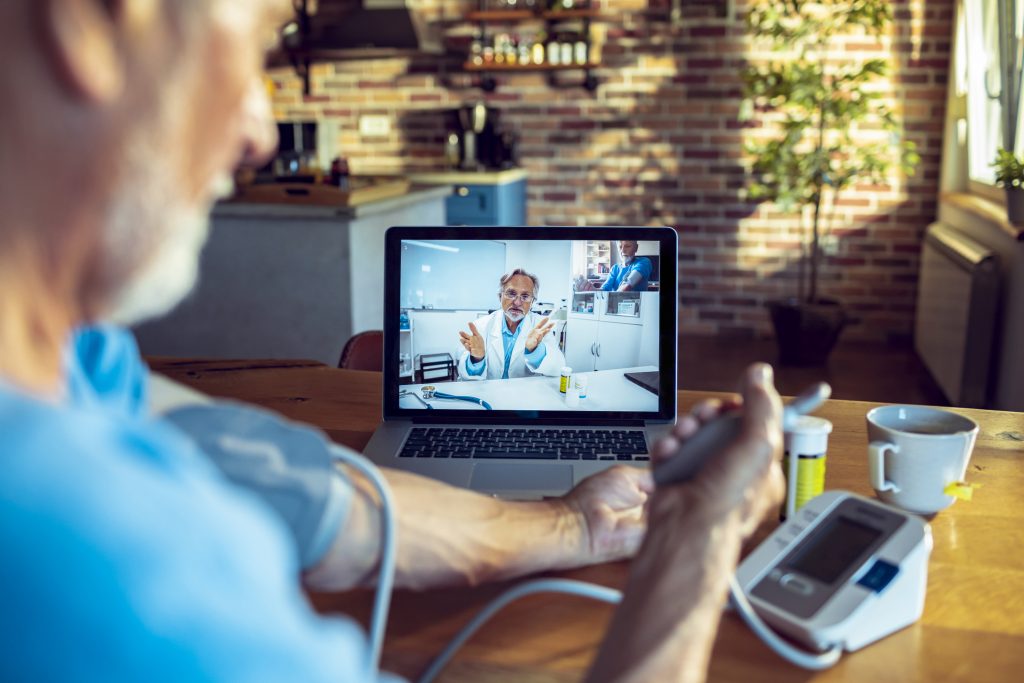Is telemedicine the new normal?

Virtually everything has changed in the past few months. The way healthcare is provided is no different. More independent physicians have moved toward telemedicine as a way to continue to see patients but to do in a safe environment. With third party payers approving certain aspects of virtual care for reimbursement, telemedicine may well become part of the new normal.
The Harris Poll conducted surveys in early 2019 and in late April 2020 that clearly show that telemedicine is becoming more acceptable among patients. Results of the first poll conducted in 2019 showed that 66% of Americans were willing to use telehealth but only 8% had actually done so.
The more recent survey was conducted online from April 27-28, 2020, and involved 2,081 adults living in the US. This survey showed that overall use of telehealth services had doubled at that point, with almost a third of Americans (32%) saying they had tried telehealth and 15% saying they used telehealth for the first time during the COVID-19 pandemic.
In addition, the survey revealed that:
- Two in ten (19%) said they have used telehealth since the start of the pandemic – and of those, nearly 4 in 5 (79%) had not used such services prior to COVID-19 (i.e., in the last ~2 months more people have used telehealth than had ever used it before).
- While usage (especially during the pandemic) is happening everywhere, the vast majority of telehealth users reside in suburban (44%) and urban (41%) areas, with 14% of telehealth users residing in rural areas.
When asked how they felt about using telemedicine for their healthcare services, 82% of those who had used it said they love/like it. Those who had not yet taken advantage of telehealth said they found the idea appealing. 61% of survey participants who had not used telemedicine said they like/love the idea of doing so.
Transition your practice to telehealth using Elation. Learn more here.
Telemedicine may well become part of the new normal of the COVID-19 world, as people are advised to stay home to stay safe. Many people are starting to rely on virtual healthcare services for a variety of medical issues and concerns.
The Harris Poll survey found that:
- Prior to the pandemic, about three in ten (29%) telehealth users were using telehealth for ongoing chronic conditions; during the pandemic, chronic care accounts for 47% of use.
- A third have used telehealth for diagnosis and evaluation of non-covid-19 conditions (30%).
- A quarter have used telehealth for mental health therapy sessions (26%).
- Two in ten (18%) have used telehealth since the start of the pandemic for COVID-19 related diagnosis and management.
Overall, eight in ten of those who have already used telehealth services say they are likely to use it post-pandemic.
- Of those using telehealth during the pandemic, three quarters (76%) are very/somewhat likely to continue using these types of services.
- More than a third (35%) of current telehealth users say they are very likely to continue using after the pandemic.
Although most third-party payers, including Medicare, are reimbursing independent physicians for various aspects of telemedicine, those insurance payments may only be temporary. In fact, Medicare is slated to end its coverage of a number of services when the COVID-19 pandemic no longer poses a public health emergency. Even private insurers could revert to only paying a fraction of the cost of traditional visits for telehealth services after the pandemic has passed.
Private insurers typically follow the lead of the federal government in such matters and, while there is broad bipartisan support for telehealth coverage, Congress would have to pass specific legislation to make some of Medicare’s changes permanent. Seema Verma, administrator of the Centers for Medicare & Medicaid Services (CMS), says that “Reversing course would be a mistake.” Approximately nine million people under traditional Medicare used telemedicine services during the early months of the crisis. Verma adds, “It was really a no-brainer for us.”






